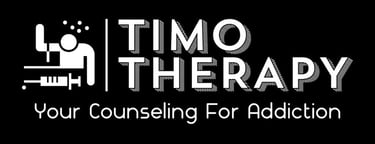Relapse Discussed Part 3 - Sabotage at the Starting Line: The Mindset of the Relapsing Addict
Why do some people bring drugs into detox or rehab? This raw post explores the mindset of the relapsing addict and takes a closer look at the self-sabotage, fear, denial, and manipulation behind one of the most dangerous relapse patterns—using even while seeking help.
RELAPSE & RELAPSE PREVENTION


Sabotage at the Starting Line
Let’s rip the Band-Aid off...and let's not take any hostages.
Some people walk into treatment with drugs in their sock, tucked in their bra, stashed in their suitcase, or buried in a shampoo bottle. Believe it or not, desperate enough to...some individuals will even go as far as to stuff some stuff up their butt. True story.
Yes—even in detox. Even in inpatient residential rehab. Even in the place they’re supposed to be getting clean.
It happens more than you think. And it’s not always out of pure defiance—it’s deeper than that. It’s fear. It’s desperation. It’s the cunning nature of addiction doing what it does best: trying to survive.
So why does this happen? Why would someone bring the very substance destroying their life into the one place designed to save it?
Let’s talk about it.
The Addict’s Last Security Blanket
For many addicts, drugs or alcohol have been the only coping mechanism they've ever known. It's not just about getting high—it’s about surviving emotionally. It’s what’s been there when nothing else was.
Walking into treatment means letting go of that comfort.
Even if it’s killing you, it’s still familiar. It's still yours. And some people can’t imagine life without it—not yet.
So they bring it. “Just in case.”
In case they can't handle the withdrawals.
In case they change their mind.
In case they want one last hit.
It’s a psychological safety net—even if it’s toxic.
Fear of Detox Pain
Let’s be real—detox can be brutal.
The fear of withdrawal is enough to keep many people using. Opioid withdrawal can feel like your body is being crushed from the inside out. Alcohol withdrawal can be deadly. Meth comedowns are terrifying.
So what do some people do?
They sneak in a little stash to taper themselves off or get through the first few days.
But that’s not how this works. You can’t half-step recovery. You can’t bring a loaded gun into a place meant to disarm you.
The Need to Control
Addiction is all about control—and the illusion of it.
People who bring drugs into rehab are still running the show. They want to call the shots. They want to do recovery their way.
That’s the disease talking.
Control is a major relapse trigger. Because when life doesn’t bend to your will, and you haven’t surrendered, you reach for what you can control: getting high.
Bringing drugs in is the ultimate power play for someone who hasn’t surrendered yet.
Denial Runs Deep
Some addicts walk into treatment not because they want help—but because they were forced.
Maybe it was court-ordered. Maybe their family gave them an ultimatum. Maybe CPS got involved. Maybe their job was on the line.
They show up, but they’re not ready. They tell everyone what they want to hear—but they’ve already planned to use.
Some don’t believe they’re real addicts.
They think they’re just going through a rough patch.
They think they’re smarter than the system.
So they smuggle in drugs, thinking they’ll beat the system.
They never do.
Manipulators Manipulate
Let’s not sugarcoat it—some people bring drugs in to manipulate.
They sell it to other clients.
They use it to gain power or popularity inside the facility.
They create chaos so they’re not the only one getting high.
They test the boundaries of the staff.
These people are dangerous—not just to themselves but to others trying to get clean. One person bringing drugs into treatment can cause a domino effect of relapse and destruction.
And it happens. More than you think.
The Facility Fails Too
Sometimes it’s not just the addict’s fault. Let’s call it what it is.
Some treatment centers are poorly run. Lax security. Inattentive staff. No body searches. No drug testing.
Some facilities are more interested in insurance dollars than saving lives.
And when a facility drops the ball, clients with no real intention of getting clean exploit it. Drugs make it through the front door, and before you know it—someone overdoses. Someone dies.
The facility goes into damage control. But the damage is done.
What Can Be Done?
For Treatment Centers:
Tighten up security protocols.
Do thorough intake searches (yes, even in private parts).
Random drug tests regularly.
Train staff to detect manipulation and high-risk behavior.
Create a culture of accountability, not just comfort.
For Families & Loved Ones:
Don’t assume “in rehab” means “safe.” Ask hard questions.
Choose a reputable facility with a proven safety protocol.
Be aware that relapse can happen inside the walls of treatment.
For the Addict Themselves:
Ask yourself if you're really ready. If you’re not, say so.
Don’t waste time, money, or life pretending.
Surrender means giving up the old life completely - including the stash in your sock.
Addiction doesn’t stop at the treatment center door. In fact, for many, it fights harder when it knows you’re about to kill it.
Final Thought: You Can’t Heal What You’re Still Feeding
If you’re walking into recovery with a backup plan to use—you’re not ready to recover. Period.
Recovery takes full surrender. Not half. Not almost. Not “just in case.”
You can’t kill your addiction while secretly feeding it. That’s like trying to put out a fire with gasoline in your pocket.
So if you’re headed to treatment—go empty. Go raw. Go ready.
Because your life literally depends on it.




















